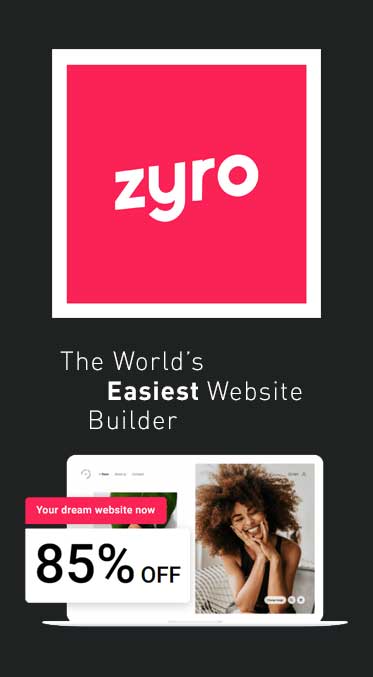3D Printing and Retail Part 1: Customization
3D Printing and Retail Part 1: Customization
“Excuse me! Excuse me!”
You could have guessed it was a kiosk vendor based solely on the peculiar way her voice pitched upwards with the word “excuse.” Plus, you can never escape these people at the mall.
Sure enough, you turn around to see a tired-looking woman in her mid-20s. She gestures towards a small statuette depicting a family of four. Upon closer inspection, you realize that it’s not just any family. It’s your family. That’s a two-foot tall rendition of your spouse and your two kids.
Judging by the outfits you’d guess this statuette is based on the holiday brunch you’d attended just last weekend. The detail was stunning. You could make the wrinkles in your face and the smartphone in your phone. There was even a spot of chocolate on your daughter’s dress, leftover from the spoonful of pudding she’d flung across the room.
Wow, you thought. These guys move fast. I must just posted those photos on Facebook…yesterday?
“Could I interest you in a —“ the kiosk vendor ventured.
“NO!”
You rejected her a bit more aggressively than you’d intended, but you don’t feel bad. After all, you’re in a hurry. Plus, she’s probably used to rejection, you figure.
As you scurry off towards gift shops, you take one last look back at the woman. She’s already moved on to her next mark: a young boy clutching an adorable puppy. The statuette she offers them is a life-sized rendition of the puppy, which seems to greatly confuse the dog.
–
This scenario, mundane as it may be, details some of the many ways the rise of 3D printing might impact retail stores. Though it’s impossible to say exactly how this technology will revolutionize the retail experience, we can make three reasonable assumptions:
- 3D printing will allow (and perhaps force) retailers to offer greater customization of their goods.
- Manufacturers and supply chain companies will be severely impacted by 3D printers.
- Other emerging technologies, such as machine learning or autonomous delivery, will influence the way we interact with 3D printers.
In this article, we’ll be focusing on the first assumption: customization.
In the previous example, the vendor’s key selling point was its highly customized goods. In the world of 3D printers, generic goods are likely to lose much of their appeal — why would you bother buying a generic statuette, when it’s possible to just print one yourself?
To stay afloat, retailers will need to offer high customized products specific to single customers. In this case, the statuette is of your family. It’s likely that this product would be very attractive to you and your family, but for everyone else in the mall, there’s no appeal.
With an in-store 3D printer, it would be possible to create a similarly-customized product for every shopper.
We’re already see this behaviour touted in digital products. For example, Netflix boasts that it “[doesn’t] have one product but over a 100 million different products with one for each of our members.” My Netflix home page looks nothing like your Netflix homepage, because we each see customized experiences tailored to our liking. You can also see this effect if you compare the results of identical Google searches made on two different machines.
Thus far, this trend has been limited almost entirely to digital products. Manufacturing custom physical goods requires lots of time and money — think of the expenses and waiting period associated with commissioning a sculptor to handcraft that statuette of your family.
However, 3D printers will change this by allowing for instant manufacturing. If you want a custom statuette, you don’t have to call an artist. You can just send the printer a few photos of your family and watch it do its thing. And since this process doesn’t require shipping or paying for a highly skilled artist, the final product will cost a fraction of the price.
Sounds great, no? From a consumer perspective, it’s definitely a win. But for retailers and manufacturers, the rise of 3D printing will create a number of trials for them to overcome. One major challenge retailers will face is finding ways to differentiate their machines, both from other retailers and from small-scale, consumer-grade 3D printers.
You can think of this like a regular ink printer. Many of u s have a cheap inkjet printer in our home or office. It probably does an adequate job of printing documents or photos. But if you want to print a full-sized poster or a super high quality photo, you’ll need to visit a retailer and pay to use their fancy printer.
We’re likely to see a similar dynamic with 3D printers. Many of us will purchase small units for our homes, which will do a great job of day-to-day manufacturing tasks. These are often the tasks you see touted by the 3D printing companies of today: printing that one weird screw you need to fix your car, or creating a new mug if your kid breaks one.
In order to attract customers, retailers might offer customization abilities beyond what’s capable of home printers. This might be the ability to use unique materials, to print very large or small objects, to include moving parts, or to print in extremely fine detail. They could also offer unique auxiliary technologies, such as scanners, neural networks, or the ability to preview products using augmented reality technologies.
Another method retailers could attract customers is through a library of unique and useful designs. Consider the alarm clock. It’s a common object that many of might want to print, but few of us could actually design the circuitry of an alarm clock. You might purchase a design on the internet, but since you’ll probably only need to print one alarm clock, buying an expensive set of plans feels like overkill. Retailers could capitalize on this situation by creating proprietary alarm clock designs, which you can only use with their printers in their stores./
The advent of instant manufacturing via 3D printers is likely to shift the retail experience from product-focused to customer-focused. Rather than manufacturing thousands of copies of the same product that only somewhat fills their customer’s needs, businesses will print one copy of thousands of products that perfectly fit their customer’s individual needs. The challenge will be to compete with the customer’s ability to manufacture these products on their own.
For part two click here.
Comments


